
The Pastry War, also known as the first French intervention in Mexico or the first Franco-Mexican war (1838–1839), began in November 1838 with the naval blockade of some Mexican ports and the capture of the fortress of San Juan de Ulúa in the port of Veracruz by French forces sent by King Louis Philippe I. It ended in March 1839 with a British-brokered peace. The intervention followed many claims by French nationals of losses due to unrest in Mexico. This would be the first of two French invasions of Mexico; a second, larger intervention would take place in the 1860s.
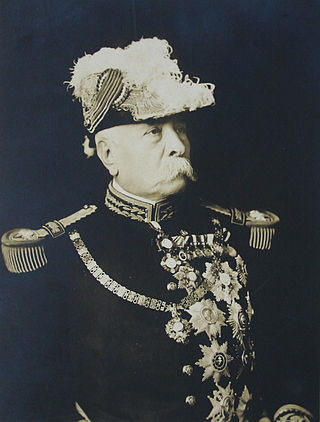
José de la Cruz Porfirio Díaz Mori, was a Mexican general and dictator who served on three separate occasions as President of Mexico, a total of over 30 years, from 28 November 1876 to 6 December 1876, 17 February 1877 to 1 December 1880, and 1 December 1884 to 25 May 1911. The period from 1876 to 1911 is often referred to as the Porfiriato, and has been called a de facto dictatorship.

Benito Pablo Juárez García was a Mexican politician, military commander, and lawyer who served as the 26th president of Mexico from 1858 until his death in office in 1872. A Zapotec, he was the first Indigenous president of Mexico and the first democratically elected Indigenous president in the postcolonial Americas. A member of the Liberal Party, he previously held a number of offices, including the governorship of Oaxaca and the presidency of the Supreme Court. During his presidency, he led the Liberals to victory in the Reform War and in the Second French intervention in Mexico.

The Battle of Puebla, also known as the Battle of May 5 took place on 5 May 1862, near Puebla de los Ángeles, during the second French intervention in Mexico. French troops under the command of Charles de Lorencez repeatedly failed to storm the forts of Loreto and Guadalupe situated on top of the hills overlooking the city of Puebla, and eventually retreated to Orizaba in order to await reinforcements. Lorencez was dismissed from his command, and French troops under Élie Frédéric Forey would eventually take the city, but the Mexican victory at Puebla against a better equipped force provided patriotic inspiration to the Mexicans.

Miguel Gregorio de la Luz Atenógenes Miramón y Tarelo, known as Miguel Miramón, was a Mexican conservative general who disputed the Mexican presidency with Benito Juarez at the age of twenty seven during the Reform War, serving between February 1859 and December 1860. He was the first Mexican president to be born after the Mexican War of Independence.

The Second Mexican Empire, officially known as the Mexican Empire, was a constitutional monarchy established in Mexico by Mexican monarchists with the support of the Second French Empire. This period is often referred to as the Second French intervention in Mexico. French Emperor Napoleon III, with backing from Mexican conservatives, the clergy, and nobility, aimed to establish a monarchist ally in the Americas as a counterbalance to the growing power of the United States.
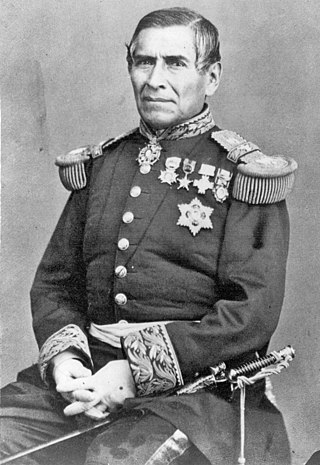
Juan Nepomuceno Almonte Ramírez was a Mexican soldier, commander, minister of war, congressman, diplomat, presidential candidate, and regent. The natural son of Catholic cleric José María Morelos, a leading commander during the Mexican War of Independence, Almonte played an important role as a conservative in the Mexican Republic. He served as Minister of War during multiple administrations as well as in various diplomatic posts in the United States and in Europe. In 1840 he led government forces in an attempt to rescue president Anastasio Bustamante after the president was taken hostage by rebels in the National Palace. Almonte was minister to the United States in the years leading up to the Mexican American War and lobbied against its interference in Texas, which Mexico considered a rebellious province. Almonte was a leading figure in conservative efforts to re-establish monarchy in Mexico, supporting the French imperial forces during the Second French Intervention in Mexico and the establishment Second Mexican Empire under Maximilian I of Mexico. Almonte was serving as a diplomat in France when France withdrew military support of the Empire, which fell in 1867. He died two years later in 1869.
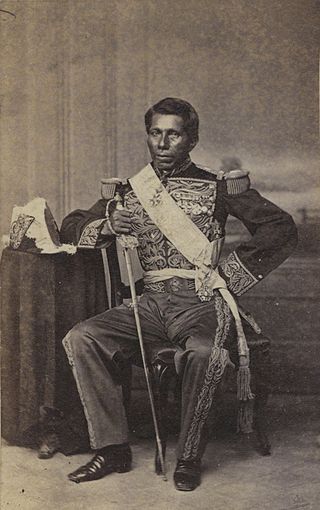
José Tomás de la Luz Mejía Camacho, better known as Tomás Mejía, was a Mexican soldier of Otomi background, who consistently sided with the Conservative Party throughout its nineteenth century conflicts with the Liberals.
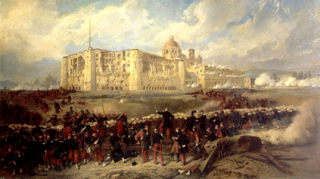
The second French intervention in Mexico, also known as the Second Franco-Mexican War (1861–1867), was a military invasion of the Republic of Mexico by the French Empire of Napoleon III, purportedly to force the collection of Mexican debts in conjunction with Great Britain and Spain. Mexican conservatives supported the invasion, since they had been defeated by the liberal government of Benito Juárez in a three-year civil war. Defeated on the battlefield, conservatives sought the aid of France to effect regime change and establish a monarchy in Mexico, a plan that meshed with Napoleon III's plans to re-establish the presence of the French Empire in the Americas. Although the French invasion displaced Juárez's Republican government from the Mexican capital and the monarchy of Archduke Maximilian was established, the Second Mexican Empire collapsed within a few years. Material aid from the United States, whose four-year civil war ended in 1865, invigorated the Republican fight against the regime of Maximilian, and the 1866 decision of Napoleon III to withdraw military support for Maximilian's regime accelerated the monarchy's collapse.
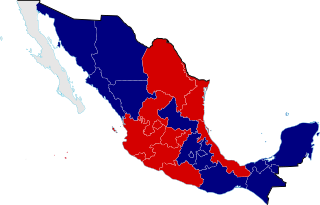
The Reform War, or War of Reform, also known as the Three Years' War, and the Mexican Civil War, was a complex civil conflict in Mexico fought between Mexican liberals and conservatives with regional variations over the promulgation of Constitution of 1857. It has been called the "worst civil war to hit Mexico between the War of Independence of 1810–21 and the Revolution of 1910–20". Following the liberals' overthrow of the dictatorship of conservative Antonio López de Santa Anna, liberals passed a series of laws codifying their political program. These laws were incorporated into the new constitution. It aimed to limit the political power of the executive branch, as well as the political, economic, and cultural power of the Catholic Church. Specific measures were the expropriation of Church property; separation of church and state; reduction of the power of the Mexican Army by elimination of their special privileges; strengthening the secular state through public education; and measures to develop the nation economically.
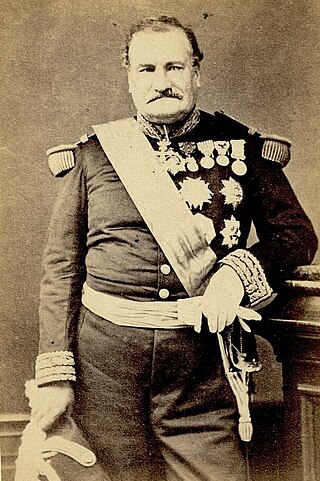
Élie Frédéric Forey was a Marshal of France.
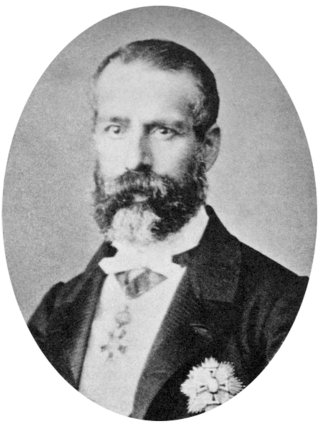
Leonardo Márquez Araujo was a conservative Mexican general. He led forces in opposition to the Liberals led by Benito Juárez, but following defeat in the Reform War was forced to guerrilla warfare. Later, he helped the French in their intervention to help restore the conservative cause. However, their defeat forced him into exile for most of the rest of his life.

Pelagio Antonio de Labastida y Dávalos was a Mexican Roman Catholic prelate, lawyer and doctor of canon law, and politician. He was a member of the imperial regency that invited Maximilian of Austria to accept the throne of Mexico.

Chihuahua, officially the Free and Sovereign State of Chihuahua, is one of the 31 states which, along with Mexico City, comprise the 32 federal entities of Mexico. It is located in the northwestern part of Mexico and is bordered by the states of Sonora to the west, Sinaloa to the southwest, Durango to the south, and Coahuila to the east. To the north and northeast, it shares an extensive border with the U.S. adjacent to the U.S. states of New Mexico and Texas. The state was named after its capital city, Chihuahua City; the largest city is Ciudad Juárez. In 1864 the city of Chihuahua was declared capital of Mexico by Benito Juarez during the Reform War and French intervention. The city of Parral was the largest producer of silver in the world in 1640. During the Mexican War of Independence, Miguel Hidalgo was executed on July 30, 1811, in Chihuahua city.

The Commemorative medal of the Mexico Expedition was a French commemorative campaign medal established by decree of French Emperor Napoleon III on 29 August 1863 to recognize military service during the 1862-1863 French intervention in Mexico.

The Battle of 2 de Abril was fought on April 2, 1867, in and around the city of Puebla, Puebla. It was one of the major military actions in the Franco-Mexican War between elements of the Mexican Army of the Republic commanded by General Porfirio Díaz and troops in the service of the Mexican Empire composed of Mexican imperialist soldiers.
The Liberal Party was a loosely organised political party in Mexico from 1822 to 1911. Strongly influenced by French Revolutionary thought, and the republican institutions of the United States, it championed the principles of 19th-century liberalism, and promoted republicanism, federalism, and anti-clericalism. They were opposed by, and fought several civil wars against, the Conservative Party.

A referendum on Maximilian becoming Emperor was held in Mexico on 4 December 1863. The proposal was supposedly approved by 100% of voters, with not a single vote cast against. Maximilian subsequently took the throne on 11 April 1864, starting the era of the Second Mexican Empire.

The Battle of San Pedro was fought between the French and Mexican imperial forces and the Mexican Republicans during the Second French intervention in Mexico on 22 December 1864. The liberals achieved a decisive victory over the invading forces and captured the majority of the survivors.

The siege of Puebla occurred between 16 March and 17 May 1863 during the Second French intervention in Mexico, between forces of the Second French Empire and forces of the Second Federal Republic of Mexico. The French were advancing toward Mexico City, and were blocked by Mexican troops at Puebla.


















